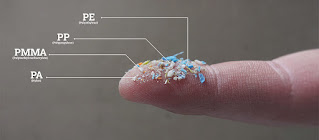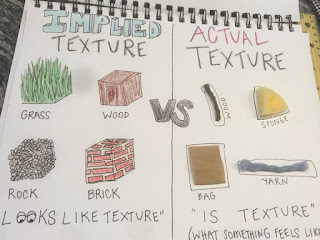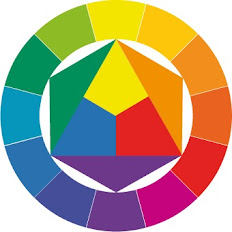Design Principles - Task 1: Exploration
Tan Zhao Yi / 0363285
Design Principles / Bachelor of Design (Honours) in Creative Media
Task 1 / Exploration
Design Principles / Bachelor of Design (Honours) in Creative Media
Task 1 / Exploration
LIST
Lectures
Task 1: Exploration
INSTRUCTION
LECTURES
Introduction: Elements and Principles of Design
Visual Communication: Utilising design to convey messages to target
audiences
Elements of design (individual building blocks):
1. Point
- The simplest element of design
- Repetitive points form a line
2. Line
- Active / Static, Aggressive / Passive, Sensual / Mechanical
- Indicate directions
- Define boundaries of shapes and spaces
- Imply volumes or solid masses
- Suggest motion or emotion
- Form pattern and textures

|
| Types of Line |
3. Shape
- The expanse within the outline of the two-dimensional area / three-dimensional object
- Becomes visible when line encloses an area
- Two general category: Geometric, Organic
4. Form
- A three-dimensional area
- Volume: Space that enclosed by form
- A major element in sculpture and architecture
5. Texture
- The tactile qualities / Surfaces / The visual representation of those qualities
- All surfaces have textures that can be experienced through touching / looking
- Two category: Simulated (looking), Actual (touching)
6. Shape
- The general receptacle of everything
- The actual space of each surface is defined by its height and width
- Three-dimensional space is experienced while we were positioned in it - Mass / Volume
- In graphic design, space defined as positive (filled space) or negative (empty space)
- The illusion of a three-dimensional space can be suggested through depth
7. Color
- The visual byproduct of the spectrum of light
- The light wavelengths that human eyes receives and processes from a reflected source
- Value: The lightness / darkness from white through grey to black

|
| Value of color |
- Intensity: Purity of hue, also called as saturation / chroma

|
| Hue, Value, Saturation |
- Color schemes: Color groupings that provide distinct colour harmonies
- Monochromatic color schemes: Based on variations in the value and intensity of a single hue

|
| Monochromatic Color Schemes |
- Analogous color schemes: Based on colours adjacent to one another on the color wheel with same saturation

|
| Analogous Color Schemes |
- Complementary color schemes: Emphasis two hues directly opposite to each other

|
| Complementary Color Schemes |
Principles of design (guides the arrangement of elements):
1. Contrast
2. Balance
3. Emphasis
4. Rules of Third
5. Repetition / Pattern / Rhythm
6. Movement
7. Hierarchy
8. Alignment
9. Harmony
10. Unity
11. Proportion
Lecture 1: Contrast and Gestalt Theory
Contrast
- The juxtaposition of strongly dissimilar elements
- Provides visual interest, emphasis a point and express content

|
| Contrast |

|
| Gestalt Theory |
- Shape / Form in German
- Rules that describe how human eye perceives visual elements
- Aims to show how complex scenes can be reduced to simple shapes
Principles of Similarity
- The brain crafts a link between elements of a similar nature
Principles of Continuation
- Human eyes follow paths, lines and curves, prefer to see a continuous flow of visual elements rather than separated objects

|
| Principles of Continuation |
Principles of Closure
- Humans prefer to see complete shapes
- We automatically fill in gaps between elements

|
| Principles of Closure |
Principle of Proximity
- The process of ensuring related design elements are placed together
Principle of Figure / Ground
- Objects are perceived as being either in the foreground or the background

|
| Principle of Figure and Ground |
Law of Symmetry and Order
- Elements that are symmetrical to each other tend to be perceived as unified group
- These elements are likely to be grouped

|
| Symmetry |
Lecture 2: Balance and Emphasis
Balance: The distribution of visual weight in an artwork
(Symmetrical / Asymmetrical)
Symmetrical Balance
- has equal weight
- centrally placed

|
Asymmetrical Balance
- Unequal visual weight
- One side might contain a dominant element which could be balanced by a lesser focal point on the other side

|
| Asymmetrical Balance |
Lecture 3: Repetition and Movement
Repetition
- Creates pattern and rhythm
- Make the artwork look active
- Variety is essential to avoid monotony
- Increases visual excitement by enriching surface interest

|
Movement
- Leads the eye in / around / through a composition
- In the form of shapes / forms / lines / curves

|
| Movement |
Alignment
- Element placed by edges line up among common rows or columns / bodies along common centre
- Creates unity and cohesion - stability
Lecture 4: Harmony & Unity
Harmony
- The selection of elements that share a common trait
- Harmony becomes monotony without variety

|
| Harmony |
Unity
- The repetition of particular elements (colours / shapes / materials)
- Give a sense of oneness, creating a theme

|
| Unity |
- Both design elements that have to do with size
- Scale
- The size of one object in relation to the other objects
- Determined in two ways: Actual measurement / Visual estimates based on comparison
- Used to specify or illustrate details
- Proportion
- The size of the parts of an object in relationship to other parts of the same object
- The relationship of two or more objects in a composition

|
| Proportion |
Lecture 5: Symbol, Word and Image
Symbol
- A sign, shape or object that is used to represent something else
- Convey / Provide information, equivalent to one or more sentences of text / a story
- Divided to two category: Figurative / Non-figurative Representation
- Visuals / Graphic Symbols (Pictorial / Abstract / Arbitrary)

|
| Pictorial Symbol |

|
| Abstract Symbol |

|
| Arbitrary Symbol |
Word and Image
- It is important to use suitable word and image in design
- Choose the right words to pair with image - deepen the meaning of the design
- Suitable typeface and positioning creates visual hierarchy and balancing

|
| Poster with Words and Image |
Task 1: Exploration
In this task, we were required to search for an image related to the
SDG (Sustainable Development Goals) chosen.
Website:
The 17 Goals | SDG
The SDG that I chose is Goal 14: Life below water.
1. Research

|
| Fig 1.1. Goal 14: Life Below Water |

|
| Fig 1.2. Coastal Eutrophication - http://www.clhbwt.com/news/hydt/862.html |
Then, ocean acidification is primarily driven by the increase in
atmospheric CO2 levels resulting from human activities, particularly the
burning of fossil fuels, deforestation, and industrial processes. It
impacts the coral reefs vulnerability by reducing calcification
rates and weakened coral structures. The increase of greenhouse gas
emissions such as CO2 also contributes to the ocean warming.
Plastic pollution influences the ocean due to inappropriate waste management, improper disposal of plastic and the
pervasive use of them. The major consequences are producing micro plastics
that can enter the food chain and pose risks to marine organisms and human
health.

|
| Fig 1.3. Microplastics - 1,140 × 500 |
Lastly, many marine species are being harvested at rates that exceed their natural reproduction capacities, leading to decline of fish populations, ecosystem degradation and disruption of marine food webs.
2. Exploration
I asked ChatGPT to provide me some artist that focus on this topic. And
I found out that I was attracted by artist who use recycle objects to
create their own artwork, such as Dianna Cohen, Marina DeBris, Sakaya
Ganz etc., however they doesn't work for design principles. In the end I
chose a illustration artwork from a children book.

|
| Fig 2.1. A Gift of Nature |
Title: A Gift of Nature
Artist: Dasha Nabiullina
Year: 2023
Size: Not applicable
Medium: A Gift of Nature
Medium: A Gift of Nature
Pollution, especially plastic pollution is a significant challenge to
the marine environment worldwide. This artwork depicts sea creatures
surrounded by plastics, tire, or other forms of pollution. It
effectively captures the diversity of marine life while conveying the
impact of pollution to the ocean creatures. In this artwork, the artist
highlights the beauty and complexity of the underwater ecosystems. The
wave of the boat makes the picture come alive with movement, which let
the underwater world seems lively and full of energy. However, the
pollutants surrounded such as plastics contain harmful chemicals and
toxins that leach into water, posing health risks to the sea creatures,
potentially brings harm to human health as well. The artist use
monochrome to emphasis the death that pollution leads, and the colourful
of a healthy marine life. This also reminds viewers of the pollutants
are destroying the marine habitat such as coral reefs or seagrasses that
support underwater biodiversity.
(154 words)
Design Principles:
1. Contrast & Gestalt Theory
2. Balance & Emphasis
3. Repetition & Movement
FEEDBACK
Week 2
You have to finish your lecture videos first before you start
to choose the image.
Week 3
Good.
REFLECTIONS
Experience
Exploring images that fits SDG14 is a fun journey
of discovery. I have a more deeper understanding
with the SDG which was a worldwide focus point
nowadays. When I was exploring different
illustrations, experimental projects etc., I learned
about how the successful artwork use the colours,
shapes and layouts while they fits the principles of
design.
Observations
I noticed that there were many images showing the
ocean and its creatures. They were full of bright
colors and interesting details, showing how amazing
and fragile marine life is. The images used design
principles like making some parts stand out more to
make their messages stronger. For example, they
might highlight a turtle caught in a plastic bag to
show the harm of pollution.
Findings
From this exploration, I learned that combining SDG
14 with good design can be a powerful way to get
people to care about ocean conservation. The
pictures I found reminded me of how important it is
to protect marine life. They showed me that design
can be a great tool for spreading messages about
environmental issues.
FURTHER READING

Book Name: The Language of Graphic
Design Revised and Updated : An Illustrated
Handbook for Understanding Fundamental Design
Principles
Author: Richard Poulin
Published by: 2018
Database: eBook Academic Collection
(EBSCOhost)
#8 Balance
Types of Scale:
1. Objective
- Actual dimensions of a physical object / A literal correlation between an actual object and its graphic representation
- Often used in maps, architectural plans and models
2. Subjective
- A person's impression of an actual object
- Scale that is relative only to our own personal experiences is, therefore, subjective in nature
Effective use of Scale
- Create variety, emphasis and visual hierarchy in any visual communication
- Context
- In visual communication, since familiar comparisons may not be intuitive, scale becomes crucial for immediate and clear communication of visual comparisons.
Optical Effect and Scale
- Overlapping and Position
- Automatically interprets scale and depth, creating realistic or unusual spatial effects.
- Partially hidden elements appear smaller, indicating depth and spatial relationships.
- Element positions relative to the picture plane aid in organising the composition.
- Bottom area: Foreground, closest to the viewer.
- Center area: Middle ground, at midpoint distance to the viewer.
- Upper area: Background, except for landscapes where the sky seems to project forward.
- Atmospheric Perspective
- Atmospheric perspective: Enhances scale and spatial depth by creating distance effects.
- Soft edges, reduced value/contrast, and less detail for distant elements.
- Reverse atmospheric perspective for close elements: Sharper edges, stronger contrast.
- Importance of maintaining true scale regardless of the final size of the design.







Comments
Post a Comment